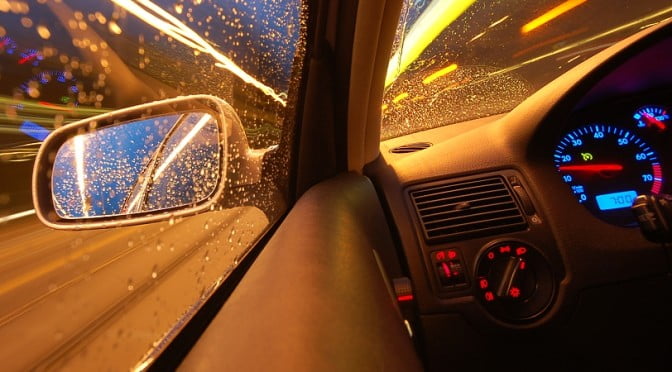What can driving teach you about painting miniatures and improving contrast in your paintjobs? Let me tell you about an interesting experiment that I read about:
The experiment
Drivers were asked to drive at a constant speed of, let’s say, 60 km/h. Then they were supposed to speed up quite much – to 150 km/h, and then to slow down to 60 km/h again but without looking at the dashboard. Now what was the result?
Most drivers slowed down only to 80-90 km/h, yet they felt they were driving at 60 km/h already. Their senses got so accustomed to higher speeds, that their perceived level of “normal speed” increased.
I had a very similar feeling today. After driving fast for some time I had to slow down to 50 km/h and when I checked the dials of my car, I noticed it was not 50 but 70 km/h. You must know the feeling too…
But how to apply it to miniature painting?
The common complaint
When you browse dozens and hundreds of miniatures presented by painters looking for feedback, you will surely notice that a common problem is that their paintjobs look boring, monotoneous. So the commonly offered piece of advice is “more contrast!”. But what you hear in return is “the paintjob is contrasted enough already”.
So what’s the deal? Is it that the painter doesn’t want to hear criticism and advice, or maybe they cannot see what’s wrong?
Usually it’s the latter. But there’s an easy trick to make them see!
Pandadosmares’ story
You surely recognize Pandadosmares from our miniature painting forum. This Portuguese painter kept receiving the same advice and no matter how he tried, he couldn’t get it right. And then he came to Poland to Hussar 2010. This gave him a chance to see works of other miniature painters and what he realized was that regardless of his previous convictions, the contrast of his works was still insufficient.
This live demonstration allowed him to make progress in his hobby again, after some time of experiencing a problem with making any improvements. One of his repeating comments after the contest was that he was surprised how strong contrasts were used by better painters. And the kind of contrast we mean here is not using contrasting colors, but strong chiaroscuro – deep shadows and strong highlights. And no, the contrast doesn’t have to be abrupt, it can be smooth – it just helps emphasize the sculpt.
Sculpting with light
One phrase I picked up from Ana is that painting is a lot like sculpting with light. And this is true: miniatures are small, so natural chiaroscuro is not very intense. If you exaggerate it a bit with your painting of lights and shadows, you will make the miniature more dramatic, more interesting and more eye catching.
Now think, which version of this paintjob looks more eye catching? Not realistic, but more interesting:

I used a picture of one of my older works. Now imagine you see them both on a gaming tabletop or in a display cabinet. Which one catches your attention easier? And on the second look, you pay attention for quality of the paintjob, but that’s another story…
So you want to do a little exercise?
Speed up and then slow down!
Remember the experiment from the beginning of this article? After driving at high speed for some time, drivers had altered perception of what normal speed was. When they slowed down, they thought they were actually driving slower than they really did. Why not try it with miniature painting?
So do it in a few simple steps:
- Assume that the level of contrast you actually use is your normal contrast level.
- Take a new miniature. Not necessarily a valuable one, it can be something as common as a simple plastic goblin. It’s just a subject for the exercise.
- Now paint it with extreme contrast, and by saying extreme I really mean it. When shading – shade to black. When highlighting – go up to white. As I said before, no need to do it abruptly – if you enjoy smooth blending, keep your style. Just be extreme with your highlighting and shading.
- The miniature is painted. It looks exaggerated and cartoonish, doesn’t it? Probably not very realistic, but when placed in a display cabinet it would attract attention, at least from distance, wouldn’t it? Now you’re driving at high speed, so to say…
- Do you feel comfortable with the “speed” already? If you do, move on to the next step. If not – maybe you should practise a bit more, paint another miniature this way? You’re not doing this exercise for us, but for yourself!
- Now slow down and return to your normal speed. Oh wait, I didn’t really mean driving but painting 😉 I meant returning to your normal level of contrast. Paint a miniature with your normal level of contrast now.
And what do you think? Did your perceived level of contrast you were comfortable with shift, just like the level of speed shifted for the drivers?

The exercise can be repeated once in a while. Whenever you feel you would like to push yourself a bit further – give it another go.
Results? Shifted “normal” contrast level
I am curious if this method worked for you. Why don’t you share your results with us and discuss the method in the comments or on our forum?
No, we’re not saying you should be only painting exaggerated highly contrasted paintjobs now, not really. It was only a tool to solve the situation of being unable to push your contrast that one step further and becoming comfortable with it. Just another tool in your miniature painting toolbox.
I hope this post was helpful or at least inspiring for you. 🙂
— Mahon


